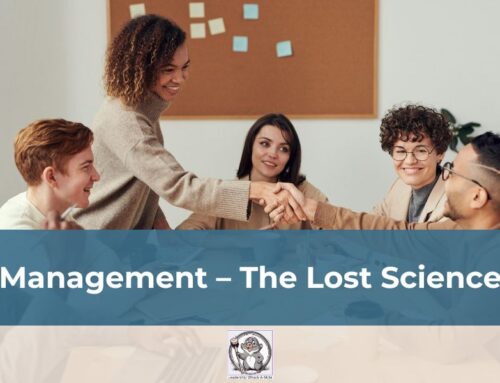
By Jeff Fierstein
Decades of research show us what the future looks like for business leaders. Chaotic changes in the company’s markets and the environment are redefining the role of senior leaders.
- The Industrial Age leader will no longer be the charismatic, visionary “top dog” who controls the overall work and output of the organization.
- Leaders will facilitate the company’s adaptation to change in harmony with the business strategy, culture, and goals.
- Empowerment will flow throughout the organization to better exceed customer expectations, improve productivity, and stimulate strategic innovation.
- Leaders will direct downward communication to all employees, enabling them to align their work, projects, and career progression with the expected company strategy and outcomes. This will go together with decentralized power and decision-making.
The future leader model requires senior leaders with different beliefs and behaviors than what they currently have in their “command and control” roles. Leadership development will be necessary to help these leaders improve their skills and practices. This may require coaching from outside experts.
For those senior leaders who cannot make the changes, a replacement for their positions may be necessary. Developing lower-level leaders can build the “talent bench” for future senior leadership roles.
The role change for senior leaders will, by necessity, change the role of mid-level leaders. The Industrial Age manager’s role was to control work output by organizing and directing the tasks of the workers.
Henri Fayol’s book General and Industrial Management (1949) listed the following functions of management: planning, organizing, commanding, coordinating, and controlling. For most of the 20th century, this was the template for the manager’s role. It still is (see any current management textbook), even today. Most managers work in organizations where senior leaders and the company culture expect, design, and reinforce these traditional roles.
The future mid-level leader helps employees grow their skills, collaborate effectively, and advance in their careers. This will require skills that managers lack today, in part because their leaders have neglected them in their development.
Just as employees will need “reskilling,” so will their managers. Managers must become proficient coaches who guide employees in the tasks cited above. They will coach employees to work effectively in project teams–especially ad-hoc and cross-functional ones. They must let go of the “control” role, which will be difficult for many managers.
Employee work will expand from functional to strategic, with the manager guiding the expansion. As companies shift toward a skill-based approach, hiring workers will be an unfamiliar task for managers. They will focus less on formal education and specific job roles. Managers will need new skills in recruiting and selection, including the ability to determine a candidate’s future potential in the company and a general capability to develop into more strategic roles in the business.
Middle managers will need to think strategically as the linchpin between senior management and employees to carry out work aligned with the company’s goals/priorities, performance demands, and culture.
Managers will focus more on “soft skills” like coaching, communication, and emotional intelligence to excel in their new roles.
Remote team management is rapidly becoming a required skill set for managers to coordinate virtual work with workers. Team skills will still be necessary; however, employees will experience their “team” in various project and innovation teams they serve on, not only in their functional ones.
During the performance appraisal process, we will gather feedback from various team members and managers who collaborate with the employees. This will involve working with other managers, project leaders, and team members, so they’ll need networking skills and the ability to gather information.
The manager will assist their employees in performing effectively in networks and project teams, perform their “job description” duties well, and plan and develop strategic skills for the future. Collaboration skills will be critical for working with various teams, cross-functional managers, and employees.
In the past, top leaders considered middle managers dispensable when company performance declined or when customer, market, or environmental changes unintentionally affected profitability. Self-managed teams became popular in the 1980s and 1990s, at which point management theorists predicted the demise of middle management. While some companies eliminated management positions, most kept the same organizational structures.
Middle managers will be even more important in the new era of management to ensure successful organizational changes. The imperative is clear – we must place a high priority on the continued development of leaders at all levels, particularly at the mid-level!
For a more in-depth discussion of leadership in ten years, see our book, Leadership Whack-A-Mole on Amazon.



